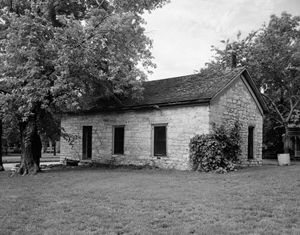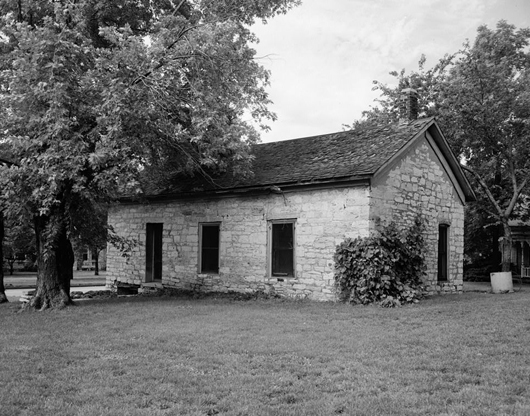
COUNCIL GROVE, Kan. (AP) – When Council Grove residents Ken and Shirley McClintock learned in 1994 that the historic Terwilliger Home was going to be demolished and replaced with a mobile home, they saw an opportunity to refurbish the early 1860s stone building and preserve an important part of Santa Fe Trail-Morris County history.
The McClintocks formed the Historic Preservation Corp. to purchase the property, restore it to its original appearance and develop the site so it could be used as an educational tool while generating enough revenue for its upkeep.
“We aren’t commercial-minded,” Shirley McClintock said. “We are history-minded.”
The outcome is the Trail Days Cafe and Museum, which offers a history-based dining experience in a museum environment that covers the years from 1858 to 1977.
The cafe’s menu is designed to tell the story of Council Grove through cuisine: American Indian with roasted buffalo and roasted elk; the Old World with Italian lasagna and rotini, French Croque Monsieur, English roast beef, Scotch-Irish bangers, Swedish meatballs and German schnitzel and bratwurst; early American with ham and beans; 20th-century farm meals with fried chicken and meatloaf; and much more.
“We’re using the five senses to present history,” she said, explaining how visitors can taste and smell the food, see and touch artifacts and hear fiddle playing or storytelling.
Displayed with many of the artifacts in the museum are stories written by the McClintocks that explain the items’ ties to local history.
Ken McClintock said the limestone structure was built in 1860-61 by carpenter Abraham Rawlinson and his wife, Mary, who came from England and settled on an 80-acre tract in Council Grove.
The Santa Fe Trail ran alongside the home, which was the last house freighters passed in Council Grove on their way west as late as 1863, he said.
William and Mary Terwilliger purchased the house in 1870 and soon after built a south wing onto the structure. William Terwilliger owned a cattle ranch, livery stable and grain-buying business in Morris County before he and his wife moved to Utah in 1891.
Through the years, renovations and additions were made to the stone house. In 1927, the main floor on the front of the house was turned into a filling station with canopied gas pumps, he said.
Because there were no hotels at that time, tourists would pitch tents and camp under the maple trees and the property became known as Maple Camp. Later, tile-block, stucco tourist cabins were built at the site. A 1930s-era cabin remains at the grounds.
The filling station closed in 1977, and in the 1980s, the building served as an antique store. In November 2001, the McClintocks opened the Trail Days Bakery Cafe, which evolved into the cafe and museum.
Other buildings on the property today include:
– 1902 Field Schoolhouse, closed at the end of the 1945-46 school year. It was moved to the location from its original site eight miles south of Council Grove.
– 1858 Atkinson Log House, a two-story house constructed in 1858 along Clark’s Creek and moved to the site in 1996. A barn was constructed around the log house to preserve it.
– 1943 World War II Cabin, the lone survivor of four cabins built in 1943 at Maple Camp that originally housed personnel serving at Herington Army Air Field during World War II.
– Maple Camp Arts and History Center, in the former Baker’s Food Market building, west of the Terwilliger home.
When the McClintocks purchased the Terwilliger property, they had no idea the house contained a rare Indian artifact: a pictograph of Kanza or Osage origin believed to be a warrior’s memorial. The pictograph is carved into the doorway between the front room and the kitchen.
Shirley McClintock said the pictograph probably was memorializing George Alexander, a resident of the home who died in November 1862 while serving in the 8th Kansas Infantry Regiment during the Civil War.
Copyright 2013 Associated Press. All rights reserved. This material may not be published, broadcast, rewritten, or redistributed.
AP-WF-01-28-13 1456GMT
ADDITIONAL IMAGE OF NOTE


